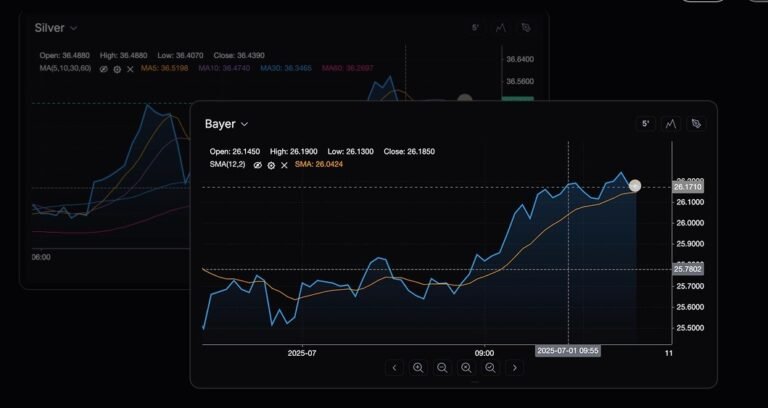
Understanding the Purpose Behind BaddiesHub and Pon Hub
BaddiesHub and Pon Hub are two names that have gained substantial traction within the adult entertainment landscape. These platforms cater to a wide variety of content preferences, but they operate with distinct purposes and functionalities. Understanding the differences between BaddiesHub and Pon Hub begins with recognizing their core intentions. BaddiesHub primarily positions itself as a niche content provider, spotlighting content that features specific aesthetics and creators often labeled as “baddies”—those who embrace bold, fashionable, and confident appearances. This branding helps it stand apart in a saturated market by targeting users seeking a particular style and identity in adult content.
On the other hand, Pon Hub (a term often mistaken for another mainstream adult platform) operates more like a large-scale aggregator, offering a broad range of adult videos, genres, and categories. It does not focus on a single aesthetic but rather aims to serve the needs of a massive and diverse audience. This distinction immediately affects how users experience and consume content on each site. Pon Hub often appeals to users looking for variety and quantity, while BaddiesHub focuses more on curated, stylized content. The contrasting core missions of each platform lay the foundation for their differing strategies and user experiences.
Content Style and Creator Communities on BaddiesHub vs Pon Hub
One of the most visible differences between BaddiesHub and Pon Hub lies in their content styles and the communities of creators they attract. BaddiesHub is known for cultivating a space where creators develop strong personal brands and often engage directly with their audiences. The content is typically highly curated, with an emphasis on aesthetics, lighting, camera work, and often fashion. The creators on BaddiesHub often maintain consistent personas, offering followers a sense of continuity and identity.
Pon Hub, conversely, features content from a broad range of creators and production companies, often with varying degrees of quality. This platform thrives on diversity—viewers can find anything from amateur clips to high-budget studio productions. While this variety appeals to a wide user base, it can make it difficult to establish creator loyalty or thematic consistency. The platform’s structure prioritizes massive content volume over individual creator development. Therefore, users looking for a more personal or stylistic connection with content might gravitate toward BaddiesHub, while those seeking variety might prefer Pon Hub’s approach.
Platform Design and User Interface Comparisons
In terms of user experience, the differences between BaddiesHub and Pon Hub become even more apparent when analyzing platform design and interface elements. BaddiesHub opts for a sleek, modern, and minimalist interface. Navigation is intuitive, with clearly defined categories that emphasize creator profiles, featured videos, and popular tags. The aesthetic appeal of the site aligns with the overall brand that emphasizes style and individuality.
Pon Hub, by contrast, takes a more utilitarian approach to its interface. The platform is designed to maximize exposure to as much content as possible. Video previews dominate the homepage, and the search and recommendation engines are built for speed and efficiency. This results in a somewhat cluttered appearance, but it serves the functional purpose of rapidly delivering content to users. While effective, it may lack the aesthetic cohesion that BaddiesHub users appreciate. Therefore, user preference in UI often depends on whether one values design elegance or immediate access to diverse material.
Content Variety and Categorization Techniques
Another crucial point of differentiation between BaddiesHub and Pon Hub is the way they handle content categorization and variety. Pon Hub is a content behemoth. It categorizes videos into hundreds of genres, tags, and themes. Whether users are searching for niche fetishes or mainstream genres, Pon Hub likely has an extensive library for each. This wide-reaching catalog is updated frequently and benefits from user-generated tagging systems and AI-powered categorization.
BaddiesHub, while offering fewer categories, specializes in deeply exploring its chosen niches. The categorization is curated and consistent, with editorial oversight ensuring quality and theme continuity. Categories such as “Glamorous Baddies,” “Urban Queens,” and “Luxury Lifestyle” dominate, giving users a clear idea of what to expect. Though it may lack the genre depth of Pon Hub, BaddiesHub makes up for it in thematic clarity and consistency. Users who appreciate depth over breadth in content classification are more likely to find BaddiesHub appealing.
Monetization and Subscription Models
Monetization strategies further illustrate the differences between BaddiesHub and Pon Hub. BaddiesHub often operates on a hybrid model that includes both free access and premium subscriptions. Its premium model usually offers access to exclusive content, direct messaging with creators, and ad-free experiences. Additionally, creators on BaddiesHub can monetize through tips, pay-per-view content, and memberships. This system supports a creator-centric economy, where user payments go directly to content producers.
Pon Hub, being an aggregator, primarily relies on advertising revenue. While it may offer a premium version with fewer ads and higher streaming quality, its main source of income is through ad impressions and partnerships. This results in a platform that is mostly free but supported by intrusive advertising and pop-ups. The monetization approach of Pon Hub may appeal to users unwilling to pay but is often considered less favorable for content creators seeking sustainable income.
Privacy and Data Security Considerations
Privacy policies and data handling practices are another domain where the two platforms diverge. BaddiesHub, with its focus on paid content and member profiles, typically enforces stronger data protection protocols. Users are encouraged to maintain discretion, and payment gateways are secured through third-party vendors with industry-standard encryption. Given that users often engage directly with creators, privacy is a prioritized concern.
Pon Hub, being open-access, gathers vast amounts of user data through cookies, search logs, and ad tracking. While this data is used to personalize experiences and improve ad targeting, it raises concerns about user privacy and data leaks. The platform has faced scrutiny in the past for hosting questionable content and allowing unverified uploads, further highlighting the potential risks. Users highly concerned with anonymity and data protection may find BaddiesHub’s system more trustworthy.
Mobile Accessibility and App Integration
With the rise in mobile consumption of adult content, mobile optimization has become essential. BaddiesHub features a responsive mobile site and in some cases, native app integration for members. The app or mobile site retains the clean design of the desktop version, ensuring a seamless transition across devices. Mobile-specific features, such as vertical video formats and swipe-based navigation, are integrated to enhance the experience.
Pon Hub also offers robust mobile support with a responsive website and mobile application. However, its app is not always accessible via standard app stores due to content regulations. As a result, users often access Pon Hub through mobile browsers. The experience is functional, although slightly cluttered due to ad placements and dense UI elements. Users valuing app-based interactions may prefer BaddiesHub, which is more likely to support exclusive mobile experiences for members.
Advertising and Commercial Strategies
Advertising policies and commercial partnerships further distinguish BaddiesHub and Pon Hub. Pon Hub’s model heavily depends on advertising revenue. As such, users are frequently exposed to banner ads, video ads, and pop-ups—many of which lead to external adult sites. This not only affects user experience but can also pose risks related to malware and phishing links.
BaddiesHub, on the other hand, minimizes advertisements in favor of premium memberships and creator revenue streams. Ads, if any, are usually integrated subtly and are related to creator promotions or merchandise. This low-ad environment makes for a more polished and less disruptive user experience. For audiences who find excessive ads distracting or invasive, BaddiesHub offers a more curated and commercial-free space.
Legal and Ethical Considerations in Content Hosting
Content legitimacy and ethical concerns are increasingly important in the adult industry. BaddiesHub generally vets its creators, requiring age verification and consent documentation before allowing uploads. This curated approach helps prevent the distribution of illegal or non-consensual content. Additionally, BaddiesHub often partners with content advocacy groups to promote ethical standards in adult entertainment.
Pon Hub, though it has taken steps to improve its verification processes, has previously faced backlash for hosting unverified or exploitative content. These issues have prompted platform-wide policy changes, such as requiring account verification before uploads. Still, due to the scale of Pon Hub’s operations, oversight is less consistent. Users concerned with ethical content production may prefer BaddiesHub for its rigorous content management protocols.
Conclusion: Choosing Between BaddiesHub and Pon Hub
When evaluating the differences between BaddiesHub and Pon Hub, it becomes clear that each platform serves a unique purpose within the adult entertainment industry. BaddiesHub appeals to users who value style, exclusivity, and ethical content creation. Its monetization supports creators directly, and its interface is designed for modern, aesthetic enjoyment. In contrast, Pon Hub excels at content diversity and mass accessibility, making it a go-to for users seeking endless variety with minimal financial commitment.
Ultimately, the choice between BaddiesHub and Pon Hub depends on user priorities—whether one values creator-driven experiences and privacy, or extensive content libraries and free access. Both platforms have their merits, but their differences are substantial enough to influence user loyalty and long-term engagement.






